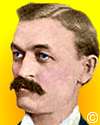
On 22 Nov 1896, the American engineer and inventor George Ferris died, leaving his name on the fairground rides known as the Ferris Wheel or the Big Wheel and modern versions built around the world. You have probably ridden one either as a child or as a tourist.
The London Eye owes its inspiration to Ferris. In the spring of 1892, Ferris went to the ways and means committee of the World’s Columbian Exposition with his plans for a vertical revolving wheel 250 feet in diameter and capable of carrying 2,260 people at a load. The London Eye, built in has a diameter of about 400 feet (122 m) able to carry a maximum 800 people in 32 passenger capsules.
In the Report of the Committee on Awards of the World’s Columbian Commission (1901), the description of the Ferris Wheel has interesting photos showing its huge scale. Along with statistics, the details of the construction work are included. It was powered by steam engines. This informative article probably has much to add to your knowledge of this historic challenge to the Eiffel Tower.
As the report states, “But mere bigness was not what was wanted—something novel, original, daring, and unique must be designed and built if American engineers were to retain their prestige and standing.”

On 22 Nov 1896, George Ferris died. He was an American civil engineer, an inventor, and a pioneer for his development of structural steel in bridge building. His name remains known for one particular, breath-taking, audacious project. Today's book pick is: Circles in the Sky the Life and Times of George Ferris, by Richard Weingardt. In the summer of 1893, at the Columbian Exposition in Chicago, an engineering marvel was unveiled and immediately captured the world's attention. It was a towering, web-like giant wheel, standing upright and rotating high above the city. Several stories taller than any existing American building, the Ferris Wheel carried adventure-seeking passengers to the dizzying height of 264 feet and provided panoramic views never before possible. This book is the first full-length biography of George Ferris.
It is available from Amazon, typically about New from $38.00. Used from $21.00. (As of earlier time of writing - subject to change.)
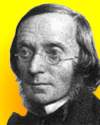 | [The popular impression about some chemists is that] the aquafortis and the chlorine of the laboratories have as effectually bleached the poetry out of them, as they destroy the colours of tissues exposed to their action. |
| no image | There have been many authorities who have asserted that the basis of science lies in counting or measuring, i.e. in the use of mathematics. Neither counting nor measuring can however be the most fundamental processes in our study of the material universe—before you can do either to any purpose you must first select what you propose to count or measure, which presupposes a classification. |
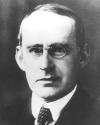 | An electron is no more (and no less) hypothetical than a star. Nowadays we count electrons one by one in a Geiger counter, as we count the stars one by one on a photographic plate. |
| Before you look at today's web page, see if you can answer some of these questions about the events that happened on this day. Some of the names are very familiar. Others will likely stump you. Tickle your curiosity with these questions, then check your answers on today's web page. | |
| Births | |
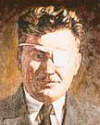 | One of the most colourful figures of the early years of U.S. aviation, was born 22 Nov 1899. He set many records. Between 15-22 Jul 1933, he made the first round-the-world solo flight (15,596 miles) in his single-engine Lockheed Vega 5B aircraft "Winnie Mae." Can you name this aviator? |
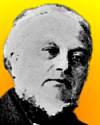 | Benedict Augustin Morel, born 22 Nov 1809, was an Austrian-born French psychologist who introduced the term dementia praecox to refer to a certain mental and emotional deterioration beginning at the time of puberty. The disorder was renamed in 1908 by the Swiss psychologist Eugen Bleuler. What is the name of the disorder, given by Bleuler, and in use today? |
| Deaths | |
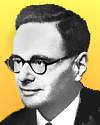 | Sir Hans Adolf Krebs (1900-1981) was a German-born British biochemist who shared the 1953 Nobel Prize for Physiology or Medicine for the discovery in living organisms of the series of chemical reactions known as Krebs cycle. What process does the Krebs cycle describe? |
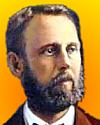 | Asaph Hall (1829-1907) was an American astronomer, discovered and named the two moons of Mars, and calculated their orbits. What names did Asaph Hall give the moon of Mars that he discovered? |
| Events | |
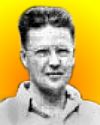 | On 22 Nov of a certain year, the first U.S. patent for a snowmobile was issued to Carl J.E. Eliason. His “motor toboggan” had ski-like front runners and a rear drive track. He later introduced an improved model. Although some vehicles before his had been made for snow travel, he is credited for creating the first reliable, self-propelled vehicle that could be manufactured on a sustained production basis. In which decade was the first snowmobile patent issued? |
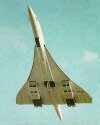 | In 1977, regular passenger service between New York and Europe on a trial basis, using the new Concorde airplane. It had already been making scheduled flights to Washington D.C. since 24 May 1976. Why was the Europe-New York service added nearly two years after service elsewhere in the world, and 18 months later than service to Washington D.C.? |
Fast answers for the previous newsletter for November 21: indium • hydrochloric acid • the weak nuclear force and the electromagnetic force • Raman scattering of monochromatic light which produces a Raman spectrum • decade containing the year 1783.
 If you enjoy this newsletter, the website, or wish to offer encouragement or ideas, please send feedback by using your mail reader Reply button.
If you enjoy this newsletter, the website, or wish to offer encouragement or ideas, please send feedback by using your mail reader Reply button. Your click on a Facebook, StumbleUpon, or other social button on the site webpages is also a welcome sign of appreciation. Thank you for using them.
© This newsletter is copyright 2020 by todayinsci.com. Please respect the Webmaster's wishes and do not put copies online of the Newsletter — or any Today in Science History webpage. (If you already have done so, please remove them. Thank you.) Offline use in education is encouraged such as a printout on a bulletin board, or projected for classroom viewing. Online, descriptive links to our pages are welcomed, as these will provide a reader with the most recent revisions, additions and/or corrections of a webpage. For any other copyright questions, please contact the Webmaster by using your mail reader Reply button.
--
If you do not want to receive any more newsletters, Unsubscribe
To update your preferences and to unsubscribe visit this link
Executive Real Estate Business Class
-
"It was like a man with wings. It wasn't like anything you'd see on TV or in a monster movie." ...
About the publisher
Search This Blog
Blog Archive
-
▼
2020
(1542)
-
▼
November
(164)
- Last day to save! Take advantage of Black Friday d...
- On This Day for November 30 - Independence of Barb...
- Newsletter for Monday 30 November.
- November 30: Cnut the Great, the 1st State to Abol...
- FAMILY: Happiness in a stressful season
- Medieval monarchs | WW1 quiz | Marlborough pie recipe
- On This Day for November 29 - United Nations resol...
- Newsletter for Sunday 29 November.
- November 29: Edison's Phonograph, Schrödinger's Ca...
- The Compass: Italy
- See the past through a different lens with Nat Geo...
- On This Day for November 28 - Opening of Tehrān Co...
- Newsletter for Saturday 28 November.
- November 28: Exploration, Invention and a Day of F...
- PHOTOGRAPHY: How adversity inspired discovery for ...
- The gift of curiosity lasts a lifetime. Give Nat G...
- Very Weird — And Very Real — Facts About The Victo...
- Black Friday Deals: Save 50% on a Britannica Membe...
- Black Friday Savings at the HISTORY Store
- On This Day for November 27 - Nobel Prizes establi...
- Newsletter for Friday 27 November.
- November 27: The Model Parliament, the 1st Native ...
- ANIMALS: The pets I’m thankful for
- A Very Special Thanksgiving Edition Of Our Newsletter
- On This Day for November 26 - Premiere of Casablan...
- Newsletter for Thursday 26 November.
- YOUR WEEKLY ESCAPE: They live in a legendary under...
- November 26: 1st National Thanksgiving, Alice in W...
- SCIENCE: The prehistoric truth about turkeys
- UPDATED: Every Membership Now 50% Off!
- Every Membership Now 50% Off!
- Demystified: Is the Ozone Layer Finally Healing It...
- On This Day for November 25 - Japanese military ba...
- Newsletter for Wednesday 25 November.
- November 25: Dynamite and The Mousetrap
- TRAVEL: Keeping your family safe over the holidays
- Meet The Real-Life "Dexter" — Serial Killer Of Mur...
- On This Day for November 24 - Dutch discovery of T...
- Newsletter for Tuesday 24 November.
- November 24: 1st Transit of Venus Observed, Van Di...
- HISTORY: The faces of COVID-19’s toll
- New This Week on History News Network
- On This Day for November 23 - Ley Juárez passed, I...
- Newsletter for Monday 23 November.
- November 23: On This Day in History
- FAMILY: Keeping the holidays familiar for your kids
- The many faces of Anne Boleyn | Take our Tudors qu...
- On This Day for November 22 - U.S. President John ...
- Newsletter for Sunday 22 November.
- November 22: Vasco da Gama Rounds the Cape and JFK...
- The Compass: Hawaii
- On This Day for November 21 - Signing of Mayflower...
- Newsletter for Saturday 21 November.
- November 21: The Mayflower Compact, a Jewish state...
- CORONAVIRUS UPDATE: 200,000 new cases in a single day
- PHOTOGRAPHY: Switching tactics to chronicle the wo...
- How The Kennedy Curse Has Tormented America's Firs...
- On This Day for November 20 - Mexican Revolution l...
- The Roundup Top Ten for November 20, 2020
- Newsletter for Friday 20 November.
- November 20: Uyghurs Conquer China, the Napoleonic...
- ANIMALS: The deadly thing about snakes
- Give your kids a love of learning with Nat Geo Kid...
- #1 Gift for Families this Holiday - On Sale Now!
- On This Day for November 19 - Anwar Sadat's visit ...
- Newsletter for Thursday 19 November.
- November 19: "Four Score and Seven Years Ago..."
- YOUR WEEKLY ESCAPE: Not all of the dinosaurs died
- SCIENCE: Can we make North America’s greatest reso...
- The Latest News from History News Network
- On This Day for November 18 - Jonestown massacre, ...
- Newsletter for Wednesday 18 November.
- November 18: St. Peter's Basilica is Consecrated a...
- TRAVEL: Best of the World 2021
- Black Friday Early Access! 50% off Holiday Bundles...
- Photographer Captures the Impacts of Climate Chang...
- On This Day for November 17 - Arnold Schwarzenegge...
- Newsletter for Tuesday 17 November.
- November 17: On This Day in History
- HISTORY: Thanksgiving in tough times
- New This Week on History News Network
- On This Day for November 16 - Election of Bhutto a...
- Newsletter for Monday 16 November.
- November 16: Francisco Pizarro Ambushes Atahualpa,...
- FAMILY: Keeping kids kind during this stressful time
- The Crown S4 | Henry VIII's seventh wife | Vikings...
- On This Day for November 15 - Palestinian statehoo...
- Newsletter for Sunday 15 November.
- November 15: The Scramble for Africa and the Vietn...
- The Compass: Peru
- On This Day for November 14 - Eritrea made a provi...
- Newsletter for Saturday 14 November.
- CORONAVIRUS UPDATE: The U.S. enters uncharted terr...
- November 14: Kirch's Comet, Einstein's Theory of L...
- PHOTOGRAPHY: In the land of Arctic dreams
- The Unhinged Soldier Who Avenged Lincoln's Assassi...
- The Roundup Top Ten for November 13, 2020
- On This Day for November 13 - Terrorist attacks in...
- Newsletter for Friday 13 November.
- ANIMALS: Images to surprise and delight during thi...
-
▼
November
(164)
-
Blogroll
-
About
HistoryFact










0 comments:
Post a Comment